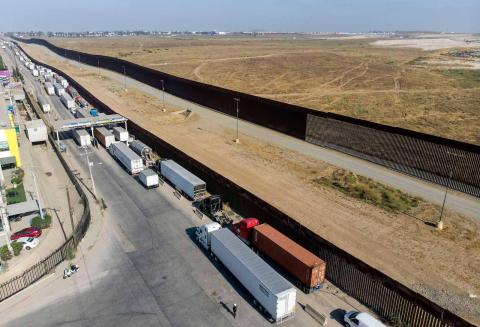
As one of the fastest growing economies in Asia, the Philippines formalised its new status as the toast of the town among global investors by hosting (on 21-23 May) the prestigious World Economic Forum on East Asia, which brought together leading businessmen, policy makers, and scholars from across the world.
Throughout the event, Filipino leaders highlighted their country's ability not only to withstand the shock of the global financial crisis and the subsequent Eurozone crisis (thanks to a combination of expansionary fiscal policy and steady inflow of remittances from overseas Filipino workers), but to also manage above average growth rates amid the recent slowdown among major emerging markets, from India and Brazil to China, Russia and Turkey.
The message was clear and simple: the Philippines is no longer the 'Sick Man of Asia', and is intent on becoming (once again) a regional growth pole. Endowed with a youthful population, vast mineral resources, a wide range of tourist attractions, and a huge pool of skilled (English speaking) workers, the Philippines has the potential to become a major economic force in the 21st century.
The overarching explanation for the Philippines' recent economic revival is the unprecedented period of political stability and the anti-corruption drive under the pro-active leadership of President Benigno Aquino, who has passionately campaigned for 'good governance' since coming to power in 2010.
As Ruchir Sharma, a prominent emerging markets expert, aptly puts it, countries like the Philippines and Mexico have re-emerged as the darlings of global investment community largely due to the auspicious convergence of decisive political leadership and responsible macroeconomic policy. In short, political cycles are as important as market conditions in determining the growth trajectory of emerging economies.
A careful look at the economy of the Philippines, however, reveals a more complicated and less impressive picture. [fold]
The economic uptick under the Aquino administration is actually nothing new, and builds on the fiscal reforms and macro-prudential policies of the Arroyo administration. Since the downfall of the Marcos dictatorship in 1986, the Philippines actually experienced steady growth rates under the stewardship of the Ramos (1992-98) and Arroyo administrations (2001-10). The 1997 Asian Financial Crisis and the 2007-08 global financial crisis had a perceptible negative impact on the country's economy, although relatively mild compared with the experience of export-oriented, globally-integrated economies such as Thailand and Singapore. But the bigger problem with previous episodes of economic boom was the highly concentrated nature of wealth creation.
In addition, the Ramos administration oversaw a series of controversial privatisation and liberalisation initiatives, which partly explain the exorbitant cost of electricity and water in the Philippines — a major impediment to large-scale inflow of foreign direct investment.
As for the Arroyo administration, massive corruption scandals and lack of political legitimacy overshadowed macroeconomic gains, particularly the stabilisation of interest and inflation rates as well as the streamlining of fiscal resources.
The Aquino administration has proven to be among the most popular governments in recent memory, but its economic policies are not significantly different from previous governments. It has more or less followed a pro-liberalisation economic paradigm, with a partial expansion of social safety nets such as the Conditional Cash Transfer schemes. In terms of trade and industrial policy, the Philippines continues to follow the same set of economic assumptions which earlier encouraged the Ramos administration to espouse a retrenchment of state participation in the economy and integration into global markets.
With no creative re-imagination of national developmental strategies, the Philippines has increasingly come to rely on low- to medium-end services, speculative real estate expansion, and remittance-driven domestic consumption to fuel economic growth. Manufacturing and agriculture, meanwhile, have stagnated. As leading development agencies such as the World Bank and Asian Development Bank have repeatedly underscored, the current mode of economic growth will continue to lack inclusiveness, unless the state provides support mechanisms for domestic manufacturing and successfully implements a land reform program. Attracting greenfield investments could help the Philippines to turbo-charge its industrialisation, but the country first needs to ramp up its dismal rates of infrastructure spending and address prohibitive utility costs.
No wonder, despite the impressive economic expansion in recent years, poverty and unemployment rates have hardly changed. Meanwhile, much of the recent growth has benefited a few family-dominated conglomerates, who collectively control up to 76% of the economy. This results in one of the highest rates of income inequality in the world.
As a result, a growing number of experts have shifted their attention to the necessity of strengthening the administrative, law enforcement and policy making capacities of state institutions to implement efficient tax collection, anti-oligopolistic reforms, strategic economic policy making, and big ticket infrastructure projects. And this means there is a need to look at the next phase of reforms beyond the Aquino administration, whose term will end in 2016.
